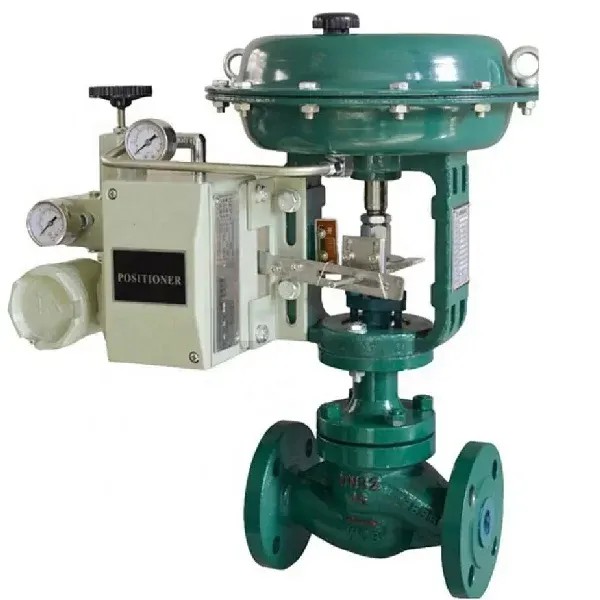Cage-Guided Globe Control Valves: Precision and Reliability in Industrial Fluid Management
Introduction
Cage-guided globe control valves have established themselves as essential components in industrial fluid management systems. Renowned for their exceptional precision, reliability, and adaptability, these valves effectively handle challenging conditions such as high-pressure drops, cavitation, and operational noise.
Their modular design and interchangeable trims enable operators to fine-tune flow characteristics, making these valves indispensable across industries like petrochemical, power generation, and manufacturing. This article provides a comprehensive overview of cage-guided globe control valves, highlighting their design, key features, performance advantages, and practical applications.
What is a Cage-Guided Globe Control Valve?
Cage-guided globe control valves are straight-stroke valves where the valve plug is guided by a cage structure. This design allows for precise control of fluid flow, with the added benefit of interchangeable internal trims tailored to different process requirements.
They excel at managing high-pressure drops by reducing cavitation and minimizing noise. The ability to swap cages provides operators with versatile options for optimizing valve performance to meet varying operational conditions.
Key Features of Cage-Guided Globe Control Valves
- Interchangeable Trim: Modular components enable quick adaptation to evolving process needs.
- Noise and Cavitation Reduction: The cage diffuses turbulent flow, mitigating cavitation and noise even in high-pressure applications.
- Dynamic Stability: Large guide diameters and sleeve guidance provide smooth, vibration-free operation.
- High Flow Capacity: Designed to support substantial flow rates under significant pressure differentials.
- Temperature Range: Operates reliably in environments from cryogenic lows of -196°C (-320°F) up to high heat conditions of +593°C (+1099°F).
Performance Advantages
Modular Design and Engineering Excellence
Cage-guided valves blend engineering principles from American, Japanese, and German valve technologies, resulting in a product that offers precision, efficiency, and flexibility.
- Flexibility: Easy customization and maintenance due to modular construction.
- Streamlined Flow: An S-shaped cavity and internal guide wings reduce dead zones and turbulence.
- Enhanced Sealing: Floating seats and tapered sealing surfaces maintain alignment and tight sealing.
- Dynamic Stability: Sleeve guidance minimizes vibration and ensures consistent operation in high-pressure environments.
High-Performance Characteristics
- Balanced Internal Structure: Reduces actuator load, improving control accuracy and efficiency.
- Customizable Flow Profiles: Options include equal-percentage, linear, and quick-open characteristics.
- Durability: Built for longevity in corrosive and high-temperature conditions.
Structural Configurations
Cage-guided globe valves come in two main plug configurations:
- Balanced Plugs: Equipped with pressure-equalizing ports to reduce actuator forces, ideal for high-pressure applications.
- Unbalanced Plugs: Simpler design requiring more actuator force, suited for low to moderate pressure systems.
The cage itself guides the plug and features sleeve windows that shape flow behavior, ensuring precise and consistent valve performance.
Connection Types and Standards
These valves support various international-standard connections, including Raised Face (RF), Ring Joint (RJ), Flat Face (FF), Socket Weld (SW), and Butt Weld (BW). Standards adhered to include GB/T 17213.3-2005, IEC 60534-3-1:2000, and ISA S75.03-1992, ensuring global compatibility.
Applications
Cage-guided globe control valves are highly versatile, ideal for fluid control in demanding industries:
- Petrochemical: Handling high-pressure, high-temperature fluids in refining and chemical processing.
- Power Generation: Precise steam and water regulation under extreme operational conditions.
- Manufacturing: Stable and accurate fluid control in production lines.
- Cryogenics: Efficient operation in ultra-low temperature environments like LNG processing.
Temperature Adaptability
- Metal Seats: Suitable for -196°C to +593°C, designed for extreme environments.
- Soft Seats: Operate between -45°C and +200°C, providing effective sealing in moderate conditions.
Innovations in Noise and Cavitation Reduction
Cavitation, caused by rapid pressure drops, can severely damage valve components. The cage design disperses turbulent flow, reducing the cavitation effect and operational noise. Internal guide wings further lower the forces exerted by flowing media, resulting in quieter, more reliable valve performance.
Technical Specifications
- Size Range: Typically 1 to 12 inches.
- Actuation: Compatible with standard diaphragm actuators.
- Materials: Available in stainless steel, carbon steel, and various alloys to meet diverse process and environmental requirements.
Future Trends
- Smart Valve Integration: Incorporation of sensors and IoT-enabled actuators for real-time monitoring and control.
- Eco-Friendly Materials: Development of sustainable materials to reduce environmental impact.
- Enhanced Customization: Greater modularity for tailored solutions.
Conclusion
Cage-guided globe control valves offer a superior blend of precision, durability, and adaptability. Their modular design, robust construction, and advanced engineering enable them to deliver reliable flow control even under extreme conditions. By minimizing noise and cavitation while providing accurate flow modulation, these valves play a pivotal role across a wide spectrum of industrial applications.
As industries push for greater efficiency and innovation, cage-guided globe control valves will continue to be a key element in optimizing fluid control processes, ensuring reduced downtime and enhanced operational performance worldwide. Learn more about Google SEO.





Comments